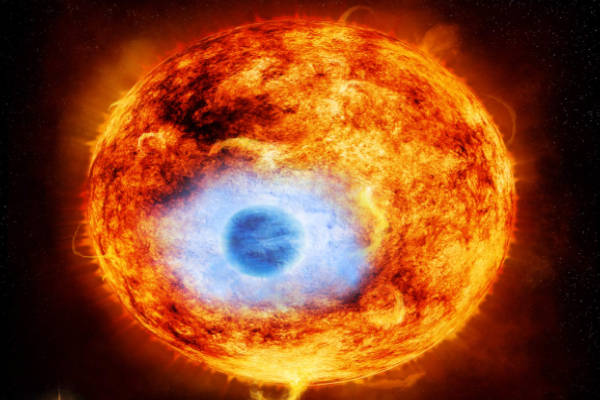In a groundbreaking discovery, astronomers have captured an extraordinary event of a star consuming a planet. This incredible phenomenon took place approximately 12,000 light years away from Earth in the Milky Way galaxy, near the Aquila constellation.
While researchers have previously observed stars before or after they devoured planets, this is the very first time they have witnessed the act itself. Usually, planets meet their demise when their host star depletes its energy, a fate that is expected to befall Earth billions of years from now.
The recent discovery was made by a team of scientists from the Massachusetts Institute of Technology (MIT), Harvard University, and the California Institute of Technology during an accidental observation. They initially noticed a star that rapidly intensified in brightness, increasing over 100 times in just 10 days.
Further investigations by the scientists revealed that the swallowed planet was a gas giant comparable in mass to Jupiter. It orbited its star at an incredibly close distance, completing a full orbit in just one day.
The star, similar in nature to our Sun, consumed the planet over a period of approximately 100 days. Initially, it began by nibbling at the planet’s edges, resulting in the ejection of dust particles. The final 10 days witnessed a dramatic climax, as a bright explosion occurred when the planet was completely obliterated upon entering the star.
Experts believe that Earth will eventually meet a similar fate, but not for another five billion years. This will happen when the Sun exhausts its energy and engulfs the inner planets of the solar system, including Earth, Mercury, and Venus. However, scientists reassure us that the event will be far less dramatic compared to the star devouring a gas giant. This is because rocky planets like Earth are much smaller in size than gas giants, resulting in a less spectacular conclusion.
The recent observation of a star consuming a planet has provided astronomers with valuable insights into the life cycle of stars and their planetary systems. It serves as a reminder of the vastness and wonders of the universe, encouraging scientists to continue exploring and unraveling its mysteries.














Wow! This article is amazing.